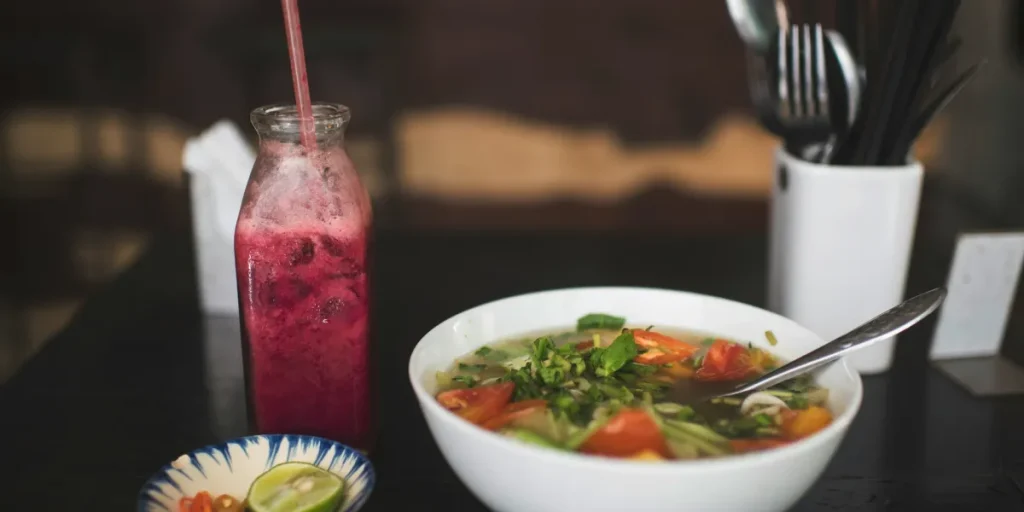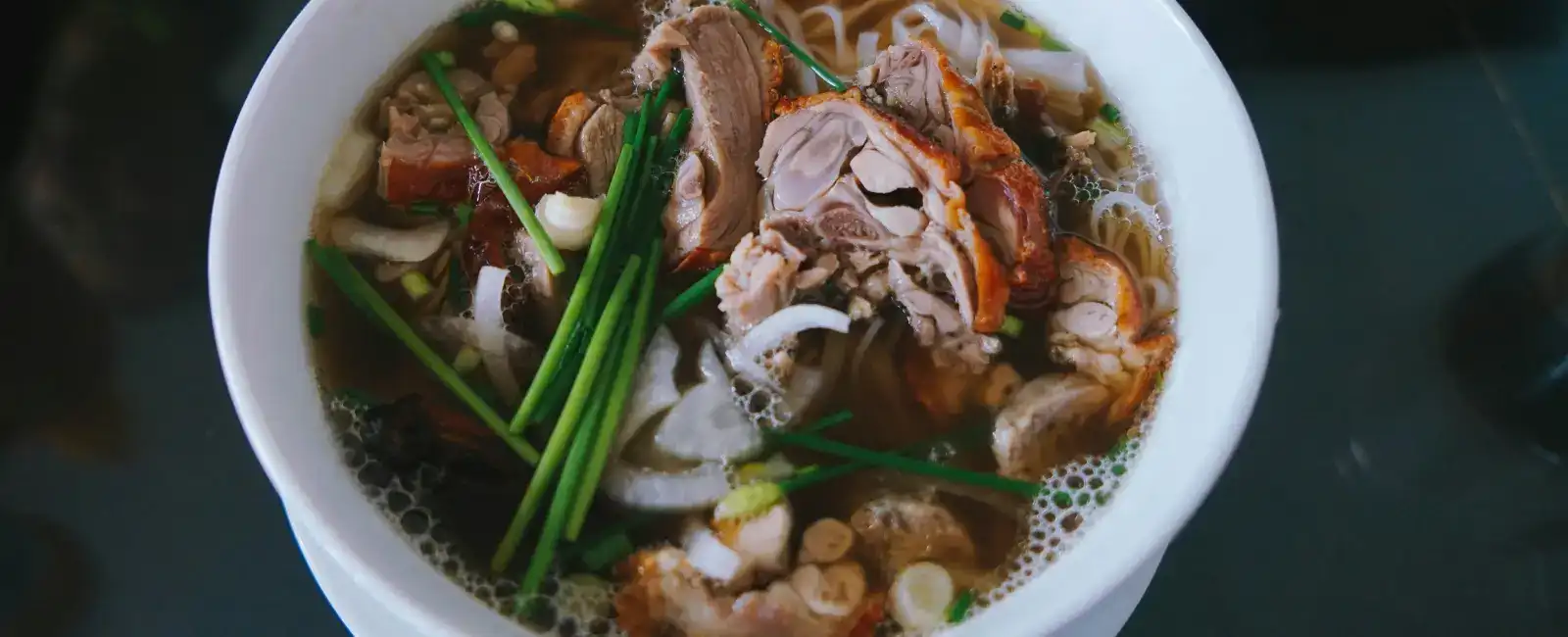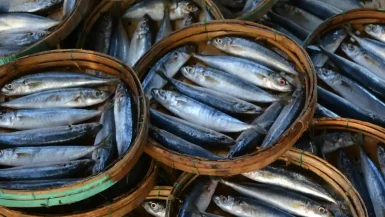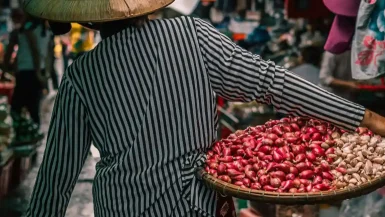Vietnamese cuisine is prominent for its vibrant flavors, fresh ingredients, and balance of textures. From street food stalls to high-end restaurants, Vietnam offers a culinary experience that is both diverse and delectable. This comprehensive guide will take you through the essential dishes, regional specialties, and unique food experiences that make Vietnamese cuisine a must-try for any foodie. So, let’s embark on a delicious journey through the flavors of Vietnam.
The Essence of Vietnamese Cuisine
Vietnamese cuisine is characterized by its emphasis on freshness, minimal use of oil, and reliance on herbs and vegetables. Rice and rice-based products, such as noodles and rice paper, are staples in Vietnamese meals. Additionally, the cuisine is famous for its harmonious balance of five fundamental tastes: spicy, sour, bitter, salty, and sweet.
Street Food: The Heart of Vietnamese Cuisine
To truly experience Vietnamese cuisine, one must start with street food. Vendors line Vietnam’s bustling streets, offering a plethora of mouth-watering dishes. Street food is not only delicious but also an integral part of Vietnamese culture.
- Pho (Vietnamese Noodle Soup): Pho is perhaps the most iconic Vietnamese dish.This flavorful noodle soup combines a rich, aromatic broth, rice noodles, and typically beef or chicken. Fresh herbs, lime, and chili add layers of complexity to the dish. People enjoy pho at any time of the day but find it especially popular as a breakfast option.
- Banh Mi (Vietnamese Sandwich): Banh Mi, indeed, is a perfect example of French-Vietnamese fusion. This sandwich features a crispy baguette filled with various ingredients such as pork, pâté, pickled vegetables, and fresh herbs. The combination of flavors and textures makes Banh Mi a favorite among locals and tourists alike.
- Goi Cuon (Fresh Spring Rolls): Goi Cuon, also known as fresh spring rolls or summer rolls, are light and refreshing. The Vietnamese made rolls with rice paper and filled with shrimp, pork, vermicelli noodles, and fresh herbs. People typically serve them with a peanut dipping sauce.
- Bun Cha (Grilled Pork with Noodles): Bun Cha is a Hanoi specialty that consists of grilled pork patties and slices served with rice vermicelli, fresh herbs, and a dipping sauce. This dish gained international fame when former U.S. President Barack Obama dined on it with Anthony Bourdain in Hanoi.
- Banh Xeo features a savory pancake made from rice flour, turmeric, and coconut milk, filled with shrimp, pork, bean sprouts, and mung beans. The pancake is crispy on the outside and soft on the inside, providing a delightful contrast in textures.
- Che (Vietnamese Sweet Soup): Che is a broad category of Vietnamese desserts that includes various sweet soups and puddings. Ingredients can range from beans and sticky rice to fruit and coconut milk. Che is often enjoyed as a refreshing snack or dessert.
Regional Specialties: Exploring Vietnam’s Culinary Diversity
Vietnamese cuisine varies significantly from region to region, each with its own unique flavors and specialties. Exploring these regional dishes offers a deeper understanding of the country’s culinary diversity.

Northern Vietnam
In northern Vietnam, subtle flavors and freshwater ingredients characterize the cuisine.
- Pho Bac: Pho Bac, or northern-style pho, features a clear and mildly seasoned broth. The emphasis is on the purity of the flavors, with minimal use of spices.
- Bun Rieu: Bun Rieu combines a tangy tomato-based soup with crab paste, tofu, and vermicelli noodles, garnishing it with fresh herbs and lime.
- Cha Ca La Vong: Cha Ca La Vong is a famous Hanoi dish consisting of grilled fish marinated in turmeric and dill. Rice noodles, peanuts, and herbs accompany the fish.
Central Vietnam
Central Vietnamese cuisine is popular for its bold flavors and use of spices. This region offers a variety of unique and flavorful dishes.
- Bun Bo Hue: Bun Bo Hue is a spicy beef noodle soup from the city of Hue. The broth is rich and flavorful, made with beef bones, lemongrass, and chili oil. The soup includes slices of beef, pork, and Vietnamese sausage.
- Cao Lau: Cao Lau is a specialty of Hoi An, featuring thick rice noodles, slices of roast pork, fresh herbs, and crispy croutons. The dish features a small amount of broth and derives its distinct flavor from the local water used in its preparation.
- Mi Quang: Mi Quang is a turmeric-infused noodle dish from Quang Nam province. Shrimp, pork, peanuts, and fresh herbs typically accompany this dish.
The dish is popular for its vibrant yellow color and rich, savory flavors.
Southern Vietnam
Southern Vietnamese cuisine, definitely, is famous by its sweetness and use of coconut milk. The region’s tropical climate also influences the abundance of fresh fruits and vegetables.
- Hu Tieu: Hu Tieu is a popular noodle soup in southern Vietnam. It features a clear and slightly sweet broth, rice noodles, and a variety of meats such as pork, shrimp, and squid.
- Com Tam (Broken Rice): Com Tam.The dish is often accompanied by a side of fish sauce.
- Canh Chua (Sour Soup): Canh Chua is a tangy and flavorful soup made with tamarind, pineapple, tomatoes, and various fish. Fresh herbs garnish the soup, often enjoyed with rice.
Unique Food Experiences in Vietnam
In addition to the delicious dishes, Vietnam offers unique food experiences that enhance your culinary journey.
- Cooking Classes: Taking a cooking class is a fantastic way to learn about Vietnamese cuisine. Many classes include a visit to the local market to buy fresh ingredients, followed by a hands-on cooking session.
- Food Tours: Joining a food tour allows you to explore the local food scene with a knowledgeable guide. These tours often include stops at popular street food stalls and hidden gems.
- Dining with Locals: Some programs offer the opportunity to dine with local families in their homes. This experience provides insight into Vietnamese culture and allows you to enjoy home-cooked meals.
- Floating Markets: Visiting a floating market in the Mekong Delta is a unique experience. Vendors sell fresh produce and local delicacies from their boats, creating a vibrant and bustling atmosphere.
Essential Vietnamese Ingredients and Flavors
To truly appreciate Vietnamese cuisine, it’s important to understand the key ingredients and flavors that define it.
- Fish Sauce (Nuoc Mam): Fish sauce is a staple in Vietnamese cooking, used as a seasoning and a condiment. It adds a salty and umami flavor to dishes.
- Rice: Rice in fact is the cornerstone of Vietnamese cuisine. The Vietnamese use it in various forms, including steamed rice, rice noodles, and rice paper.
- Herbs: Fresh herbs such as mint, cilantro, basil, and perilla are essential in Vietnamese cooking. They add freshness and complexity to dishes.
- Lemongrass: Lemongrass flavors soups, marinades, and stir-fries with its fragrant aroma. It has a citrusy and slightly spicy flavor.
- Tamarind: Cooks use tamarind to add a tangy and slightly sweet flavor to dishes like Canh Chua and Bun Rieu.
- Coconut Milk: Coconut milk is common in southern Vietnamese cuisine. It adds richness and sweetness to curries and desserts.
- Peanuts: Peanuts are popular as a garnish, adding a crunchy texture and nutty flavor to dishes like Bun Thit Nuong and Goi Cuon.
Vegetarian and Vegan Options in Vietnamese Cuisine
Vietnamese cuisine also offers a variety of vegetarian and vegan options, making it accessible to all dietary preferences.
- Vegetarian Pho: Vegetarian pho features a vegetable-based broth, tofu, mushrooms, and fresh herbs.
- Banh Mi Chay: Banh Mi Chay is a vegetarian version of the traditional sandwich, filled with ingredients like tofu, avocado, and pickled vegetables.
- Goi Cuon Chay: Goi Cuon Chay features tofu, vermicelli noodles, and fresh herbs rolled into vegetarian fresh spring rolls, served with a peanut dipping sauce.
- Bun Chay:Bun Chay features rice vermicelli, tofu, and fresh herbs, served with a tangy dressing, as a vegetarian noodle dish.
- Che Chay: Many varieties of Che are naturally vegetarian and vegan, made with ingredients like coconut milk, beans, and fruit.
Conclusion
A foodie’s guide to Vietnamese cuisine offers a tantalizing journey through the rich and diverse flavors of Vietnam. From iconic dishes like Pho and Banh Mi to regional specialties and unique food experiences, Vietnamese cuisine, undeniably, has something to offer every palate. By exploring the street food culture, regional variations, and essential ingredients, you can truly appreciate the depth and complexity of this vibrant cuisine.
Whether you’re a seasoned foodie or a curious traveler, Vietnam’s culinary delights are sure to leave a lasting impression. So, pack your appetite and embark on a gastronomic adventure through the flavors of Vietnam. Enjoy every bite of this incredible culinary journey!



